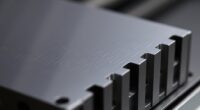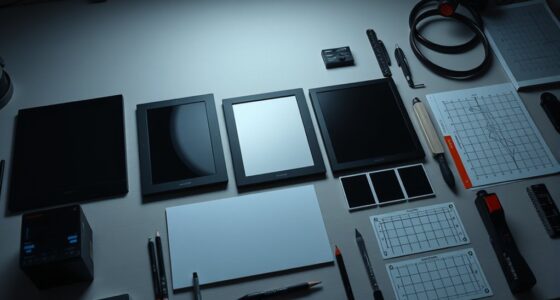When working with calibration frames like darks, flats, and biases, you face hidden costs in processing time, data management, and equipment safety. Improper handling can cause artifacts, waste valuable time, and increase risks of accidents. Maintaining calibration routines adds expenses and requires careful planning to avoid data loss. Regular calibration and safety checks save money long-term and improve image quality. Keep studying this guide to uncover expert tips that help you prevent these hidden costs and ensure safety.
Key Takeaways
- Inadequate calibration practices can introduce artifacts, leading to costly reprocessing and image quality issues.
- Skipping or rushing calibration steps increases error risk, requiring additional time and resources to correct later.
- Improper handling of calibration equipment or safety procedures may cause accidents, damage, or data loss, incurring hidden costs.
- Maintaining and updating calibration frames demands ongoing expenses for storage, tools, and personnel training.
- Regular calibration and proper management prevent equipment drift, reducing long-term repair costs and ensuring reliable data collection.
The Hidden Processing Time Burden of Calibration Frames

Calibration frames might seem like a quick step in your imaging workflow, but they actually add a significant hidden processing time. The real challenge lies in managing calibration complexity, which can vary based on your equipment and data quality. Each set of darks, flats, or biases requires careful processing, often involving multiple corrections and adjustments. This not only extends your overall processing time but also demands extra attention to detail, increasing the chance of errors. You might think calibration is straightforward, but as complexity grows, so does the time needed to properly process and integrate these frames. Skipping or rushing calibration can lead to subpar results, but investing time upfront ensures better image quality and reduces troubleshooting later. Additionally, noise reduction during calibration can significantly impact the final image quality, emphasizing the importance of thorough processing.
Storage Challenges and Data Management Strategies

Managing calibration data requires you to stay organized and choose the right storage solutions. Efficient data organization helps prevent clutter and makes retrieval faster, saving you time and effort. Selecting ideal storage media ensures your data remains accessible without unnecessary costs or performance issues. Additionally, considering the anti-aging effects of proper storage can help maintain data integrity over time.
Efficient Data Organization
Organizing your data efficiently is essential to avoid storage chaos and guarantee smooth workflows. You should implement consistent metadata tagging to easily identify calibration frames, ensuring quick retrieval and proper categorization. Use clear, standardized tags for darks, flats, biases, and other calibration types, making searches faster and more accurate. Additionally, maintain strict version control for your datasets, so you track changes and prevent confusion over which files are current. Regularly update metadata to reflect modifications and keep your organization system aligned with your workflow. Incorporating proper data management strategies helps prevent errors and improves overall efficiency. By establishing these practices, you minimize clutter, reduce errors, and streamline calibration processes, ultimately saving time and avoiding costly data mishaps. Proper data organization is a critical foundation for effective calibration and overall imaging success.
Storage Medium Optimization
Optimizing your storage medium is essential as the volume of calibration frames grows, often leading to capacity constraints and slower data retrieval. To manage this, choose appropriate storage media like SSDs or high-capacity HDDs, balancing speed and cost. Implement data compression to reduce file sizes without losing quality, saving space and improving access times. Organize your storage with a clear hierarchy, separating raw data from processed frames for easier retrieval. Regularly review storage usage and archive older, infrequently used calibration frames to external drives or cloud solutions. Consider this table for quick reference:
| Storage Media | Best Use Cases |
|---|---|
| SSD | Fast access, active projects |
| HDD | Large capacity, backups |
| Cloud Storage | Off-site safety, sharing |
| External Drives | Archiving, long-term storage |
Additionally, understanding storage management principles can help optimize data flow and prevent bottlenecks.
Risks of Artifacts From Improper Calibration Handling
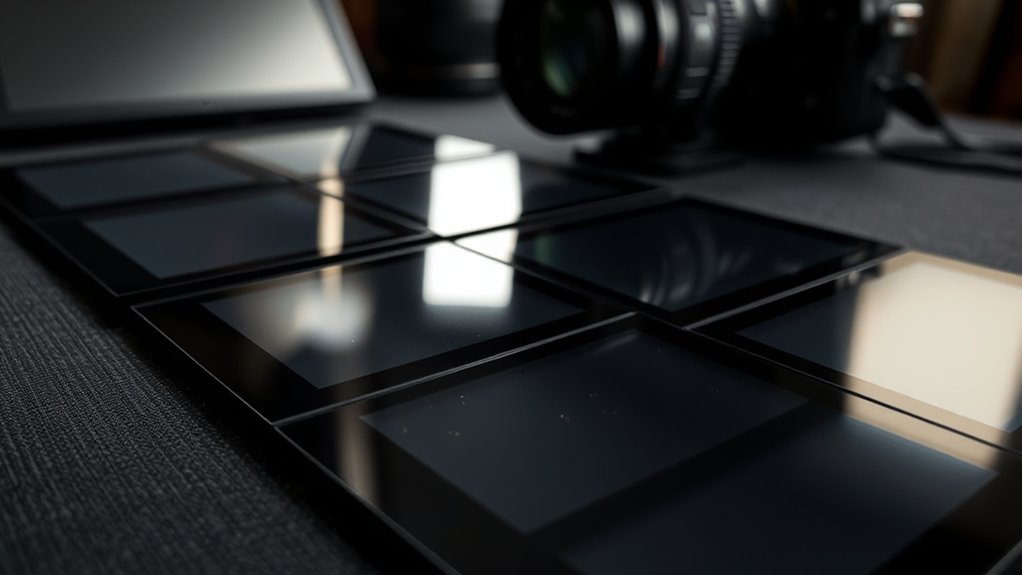
Handling calibration frames improperly can lead to artifacts that ruin your images. Mistakes in calibration processes can amplify errors, making artifacts more noticeable. If you don’t manage calibration carefully, your image quality and scientific accuracy suffer. **Understanding proper calibration techniques is essential for maintaining image integrity and avoiding artifacts**.
Artifact Formation Risks
Improper calibration procedures can introduce artifacts that compromise the quality of your images. When calibration frames aren’t handled correctly, processing errors can cause unwanted artifact formation, such as streaks, blotches, or banding. These artifacts often result from using mismatched frames, improper stacking, or neglecting to subtract calibration data properly. If you don’t verify your calibration steps, you risk leaving residual noise or introducing false signals into your images. This not only reduces detail but can lead to misinterpretations of your data. To avoid these risks, ensure your calibration frames are current, correctly matched, and processed with care. Proper handling minimizes artifact formation, preserves image integrity, and ensures your astrophotography results are clear and accurate. Additionally, understanding the sensitivity of your equipment helps in selecting appropriate calibration frames and exposure settings, further reducing the likelihood of artifacts.
Calibration Mistakes Amplify
When calibration mistakes occur, they can substantially amplify the risk of artifacts in your images. Calibration errors, such as using outdated or improperly processed frames, introduce unwanted noise and distortions. If your equipment isn’t correctly aligned, these errors become even more problematic, as they can lead to uneven correction across your frames. Misaligned optics or sensors can cause calibration frames to mismatch with your actual imaging setup, resulting in residual artifacts that compromise image quality. Small mistakes, like mixing calibration data from different sessions or neglecting to account for equipment shifts, can escalate issues quickly. Proper calibration handling is essential to prevent these amplified risks. Additionally, understanding the Vetted – Grobal World of calibration techniques helps in identifying potential pitfalls and maintaining optimal image quality.
Image Integrity Loss
Failing to properly manage calibration frames can lead directly to a loss of image integrity, introducing artifacts that degrade your results. Poor calibration accuracy often results in unwanted noise, streaks, or halos, causing significant image deterioration. These artifacts obscure details and can mislead analysis or interpretation. When calibration frames are improperly handled—such as using outdated or inconsistent data—you risk overlaying errors onto your images. This not only reduces the quality but also compromises the reliability of your data. To prevent this, ensure calibration frames are current, correctly processed, and suited for your imaging session. Proper calibration practices preserve image integrity, maintain calibration accuracy, and safeguard your results from subtle but impactful artifacts. Additionally, incorporating automation in data processing can help reduce human error and ensure consistent calibration procedures.
Safety Concerns When Using Calibration Equipment
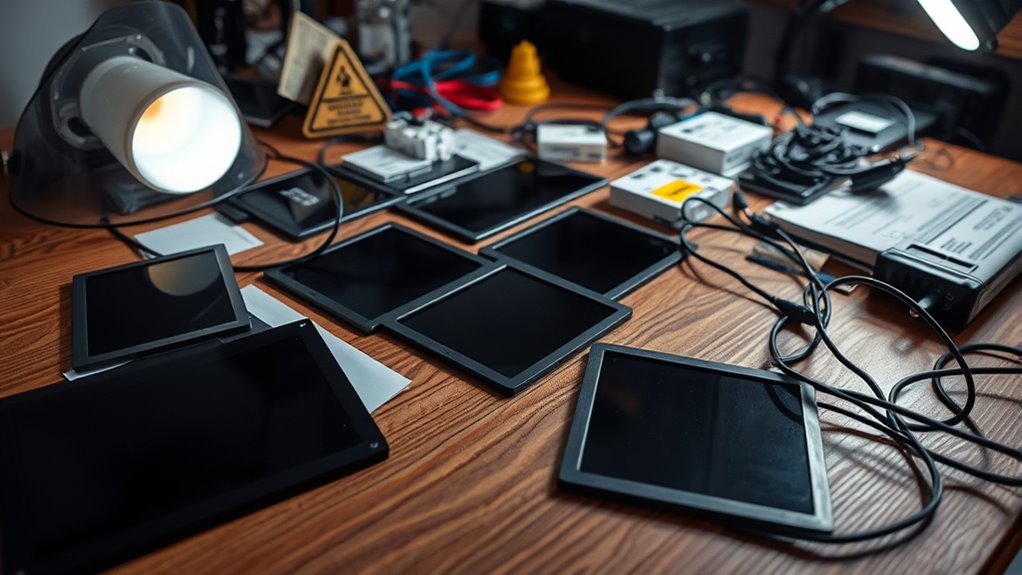
Using calibration equipment safely is crucial to prevent accidents and guarantee accurate results. Proper equipment maintenance helps identify potential hazards before they cause harm, reducing risks during operation. Regular inspections ensure that cables, connectors, and protective guards are intact and functioning correctly. Operator training is equally essential; it teaches you how to handle calibration tools correctly and recognize safety protocols. Always follow manufacturer instructions and wear appropriate protective gear. Avoid rushing through calibration procedures, as haste can lead to mistakes or injuries. Maintaining a clean workspace minimizes trip hazards and equipment malfunctions. Additionally, understanding calibration procedures ensures that you perform tasks correctly and safely. By staying vigilant, performing routine checks, and being well-trained, you protect yourself from avoidable accidents and ensure calibration results remain reliable and safe.
Cost Implications of Maintaining Calibration Routines

Maintaining calibration routines involves ongoing expenses that can add up quickly if not carefully managed. The calibration cost includes purchasing and replacing calibration equipment, consumables, and software updates, which are routine expenses essential for accurate data. Regular calibration ensures your instruments remain reliable, but neglecting it can lead to costly errors or data loss. These routine expenses, such as calibration standards and maintenance supplies, may seem minor individually but accumulate over time. It’s important to budget for these ongoing costs and implement efficient procedures to minimize waste. By managing calibration expenses proactively, you can avoid unexpected breakdowns or inaccuracies that could jeopardize your projects and increase overall costs. Proper planning helps keep routine expenses predictable and your calibration routine sustainable. Additionally, understanding calibration intervals and adhering to recommended schedules can help prevent drift and maintain precision.
Ensuring Proper Calibration Frame Acquisition to Prevent Data Loss
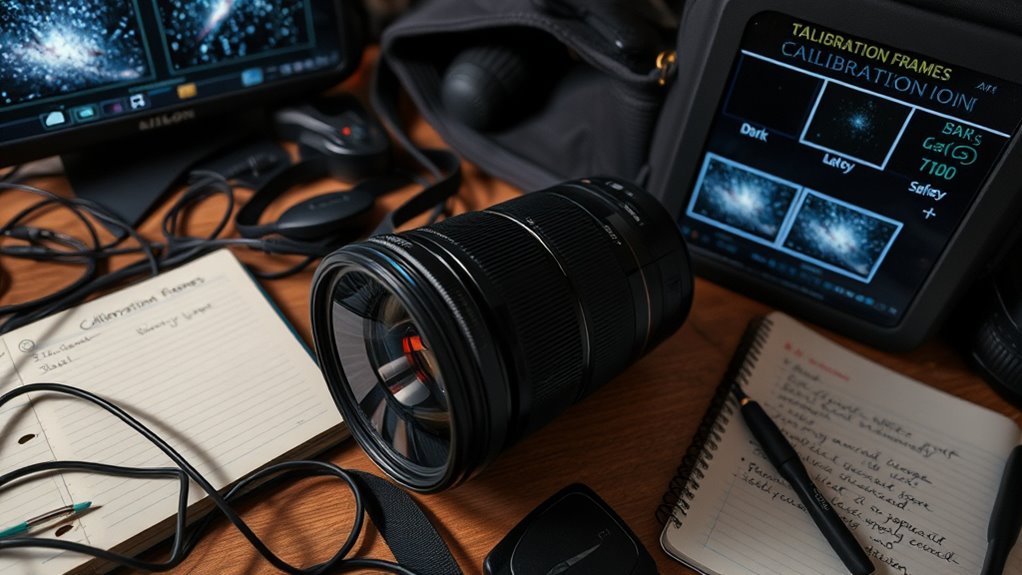
To prevent data loss, ensuring proper calibration frame acquisition is essential. Start by establishing an appropriate calibration frequency based on your equipment’s stability and usage. Regular calibration, aligned with manufacturer recommendations, keeps your frames accurate and minimizes errors. Always verify that your camera and filters are properly calibrated before capturing science images, avoiding drift or inconsistencies. Use consistent procedures for dark, flat, bias, and other calibration frames, and document each session to track calibration history. Avoid skipping calibration steps, even if your equipment appears stable; small deviations can cause significant data quality issues over time. By maintaining diligent equipment calibration and adhering to a consistent calibration schedule, you safeguard your data and prevent costly rework or loss.
Practical Tips to Minimize Hidden Costs and Maximize Safety

Implementing practical safety measures and cost-effective strategies can substantially reduce unexpected expenses and hazards in your calibration process. Focus on regular equipment calibration to ensure calibration accuracy, preventing costly errors and rework. Maintain a schedule for calibration to avoid equipment drift that compromises data quality. Use quality calibration tools and follow manufacturer guidelines to extend equipment lifespan. Here’s a quick guide:
| Strategy | Benefit | Action |
|---|---|---|
| Regular equipment calibration | Maintains calibration accuracy | Schedule routine calibration checks |
| Proper handling procedures | Reduces equipment damage | Train staff on safe handling |
| Document calibration records | Ensures traceability | Keep detailed logs for all calibrations |
| Use high-quality calibration tools | Improves calibration precision | Invest in certified calibration equipment |
| Preventive maintenance | Avoids costly breakdowns | Conduct routine inspections and upkeep |
Applying these tips maximizes safety and minimizes hidden costs.
Frequently Asked Questions
How Do Calibration Errors Affect Long-Term Data Integrity?
Calibration errors can cause calibration drift, leading to inaccurate data over time. This results in data degradation, making your long-term datasets unreliable for analysis. If you don’t regularly update and verify calibration procedures, small errors can accumulate, skewing results and reducing scientific validity. To maintain data integrity, you must consistently calibrate your equipment and monitor for drift, preventing long-term issues that compromise your data’s accuracy.
What Are the Best Practices for Securely Storing Calibration Data?
Your calibration data is crucial—treat it like gold. To guarantee storage security, use encrypted drives and keep them in a secure location. Regularly back up your data to multiple sites or cloud services to prevent loss from hardware failure or theft. Organize files systematically and verify backups periodically. These best practices safeguard your calibration frames, preserving data integrity and avoiding costly re-calibrations or data loss in the future.
How Can Calibration Routines Be Optimized for Different Equipment Types?
You can optimize calibration routines for different equipment types by ensuring compatibility and customizing procedures accordingly. Use equipment-specific settings and calibration frames, and leverage routine automation to streamline the process. Regularly update your routines based on equipment performance and calibration results. This approach minimizes errors, saves time, and maintains accuracy across various devices, ensuring your calibration process remains efficient and reliable regardless of the equipment type.
What Safety Protocols Should Be Followed During Calibration Procedures?
Did you know that nearly 30% of calibration errors stem from safety lapses? You should always prioritize equipment safety by wearing protective gear, following manufacturer instructions, and guaranteeing proper grounding. To prevent hazards, keep your workspace dry, avoid shortcuts, and regularly inspect calibration tools. Staying vigilant helps prevent accidents, protects your equipment, and ensures accurate calibration results. Always adhere to safety protocols to minimize risks during calibration procedures.
How to Balance Calibration Frequency With Operational Costs Effectively?
To balance calibration frequency with operational costs effectively, you should optimize your calibration scheduling based on your equipment’s stability and usage patterns. Regularly review calibration data to identify when recalibration is truly needed, avoiding unnecessary tests. This approach helps you maintain accuracy while minimizing expenses. Prioritize cost optimization by scheduling calibrations during planned maintenance periods and leveraging automation tools, ensuring you get reliable results without overspending.
Conclusion
So, next time you skip calibration frames or rush through safety checks, remember you’re just saving time—until your data’s a mess or your equipment bites back. Ignoring these hidden costs might seem clever now, but it’s really just setting yourself up for costly surprises. Embrace the little routines; they’re your best defense against chaos, artifacts, and safety mishaps. After all, who wouldn’t want a smooth, stress-free imaging session—at a fraction of the price?

